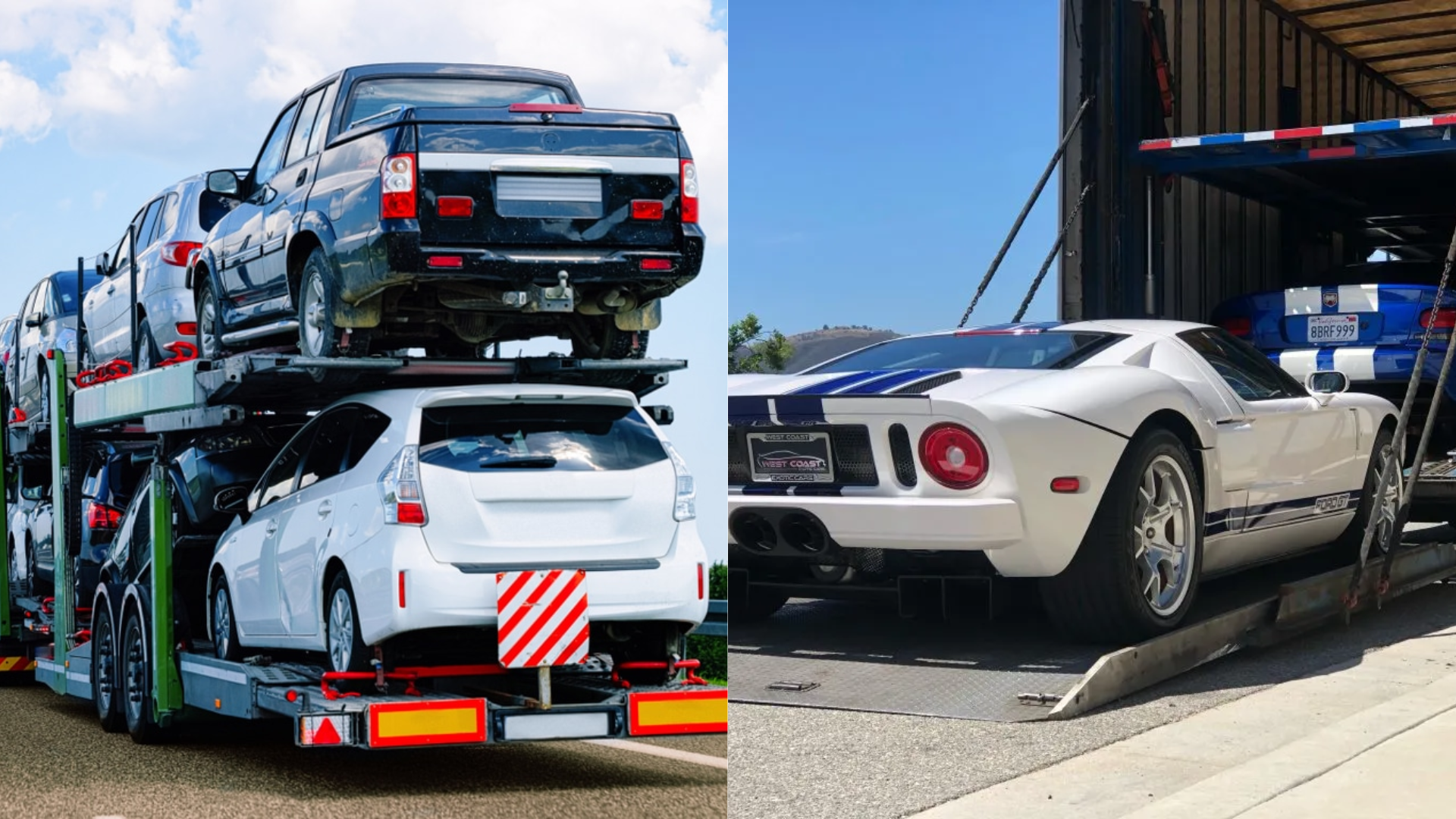When I started looking into car transport, the first question I had was pretty simple: how much does it cost to transport a car?
The truth is, the price isn’t the same for everyone. It depends on things like how far the car is going, the type of carrier you choose, and even the time of year.
Some people pay just a few hundred dollars for short trips, while cross-country moves can cost over a thousand.
In this guide, I’ll break down the average cost, explain the biggest factors that affect pricing, and share tips on how you can save money.
By the end, you’ll have a clear idea of what to expect before booking your car shipment.
How Much Does It Cost to Transport a Car on Average?

On average, it costs between $500 and $1,700 to transport a car in the United States.
The total depends mostly on the distance. Short trips under 500 miles usually fall in the $400–$800 range, while cross-country moves can reach $1,100 or more.
Many shippers also price by the mile, with open transport averaging around $0.60–$1.20 per mile and enclosed transport costing more – about $1.00–$1.90 per mile.
Open carriers are the most common and affordable choice, while enclosed carriers are used for classic, luxury, or delicate vehicles.
Knowing these averages gives you a starting point, but remember that your exact cost may shift based on timing, location, and vehicle type.
Different Ways of Transporting a Car
There are several methods available for moving a car, and the right one depends on your budget, timing, and how much protection you want for your vehicle.
| Method | Average Cost | Pros | Cons |
|---|---|---|---|
| Open Carrier | $500 – $1,100 | Cheapest option, widely available, fast scheduling. | Exposed to weather and road debris. |
| Enclosed Carrier | $900 – $2,000+ | Extra protection, best for luxury or classic cars. | More expensive, limited availability. |
| Door-to-Door | Varies | Maximum convenience, direct delivery. | Higher price, tricky for tight streets. |
| Terminal-to-Terminal | Lower than door-to-door | Cheaper, flexible drop-off and pick-up. | Less convenient, storage fees possible. |
| Driveaway Service | $400 – $1,000+ | Car arrives faster, personal delivery. | Adds mileage and wear to the car. |
| Rail Transport | $800 – $1,300 (limited routes) | Affordable for long distances, less road risk. | Limited routes, slower scheduling. |
Factors Affecting How Much It Costs to Transport a Car

The price to transport a car isn’t set in stone. Several key factors play a role in how much you’ll actually pay:
- Distance and Route: Longer trips raise the total cost but often lower the cost per mile. Busy routes are usually cheaper than remote ones.
- Type of Transport: Open carriers are more affordable, while enclosed carriers cost more but provide extra protection for high-value cars.
- Vehicle Size and Condition: Larger vehicles like SUVs and trucks take up more space and weigh more, which adds to the price. Non-running cars also cost more to load.
- Timing and Season: Prices can rise during busy summer months or around holidays. Flexible scheduling often saves money.
- Pickup and Delivery Options: Door-to-door delivery is convenient but can be more expensive than terminal-to-terminal shipping.
Real Examples of How Much It Costs to Transport a Car
When I first compared quotes, I realized that car transport prices can change a lot depending on distance, route, and carrier type. Seeing real numbers side by side makes it easier to understand what’s reasonable.
| Route Type | Open Carrier (Average Cost) | Enclosed Carrier (Average Cost) |
|---|---|---|
| Short Distance ( | $400 – $800 | $700 – $1,200 |
| Medium Distance (500–1,500 miles) | $700 – $1,100 | $1,100 – $1,600 |
| Cross-Country (1,500+ miles) | $1,100 – $1,700+ | $1,500 – $2,100+ |
These numbers show how distance and carrier choice can make a big difference in your final cost.
How to Get an Accurate Quote for Car Transport Costs
Getting a car shipping quote is the best way to know your exact cost before booking. The more details you provide, the more accurate the estimate will be. Most carriers or brokers will ask for:
- Vehicle details – year, make, and model help determine space and weight.
- Condition – running cars are cheaper to move than non-running ones.
- Pick-up and drop-off ZIP codes – distance and route shape the price.
- Preferred dates – flexible schedules often get better rates.
- Transport type – open carriers are more affordable, enclosed carriers cost more.
Always compare at least 3–5 quotes, check what’s included (like insurance or fees), and confirm the company is licensed and reviewed before committing.
Ways to Lower Your Car Shipping Cost
Car transport prices can add up quickly, but there are smart ways to save without risking delays or damage. By planning ahead and making the right choices, you can cut costs while still getting reliable service.
1. Choose Open Transport
Open carrier shipping is the most affordable option because your car is transported on a multi-vehicle trailer with others. While the car is exposed to weather and road dust, this method is safe for most everyday vehicles.
Unless you’re moving a luxury or classic car that needs added protection, open transport is the easiest way to save a few hundred dollars.
2. Be Flexible with Dates
Carriers can offer better pricing when you give them flexibility. A wider pickup window allows them to combine your car with other shipments along the same route, lowering costs for everyone.
If you need an exact pickup date, expect to pay a premium. Planning a week or two ahead gives you room to be flexible and unlocks cheaper options.
3. Ship During Off-Peak Seasons
Demand plays a big role in pricing. Summer months and holidays tend to be the most expensive times to ship a car.
If you can wait until fall or winter, you’ll often find lower rates and more carrier availability. Off-season shipping may also reduce wait times since drivers have more room on their trailers.
4. Compare Multiple Quotes
Every company prices routes differently, so it’s worth shopping around. Get at least three to five quotes from brokers or carriers before deciding.
Pay attention not just to the price, but also to what’s included – like insurance, fuel fees, and delivery terms. Comparing side by side helps you avoid hidden costs and find the best balance between price and service.
5. Keep Your Car Operable and Light
A car that runs is much cheaper to load than one that doesn’t. Inoperable vehicles often need special equipment, which adds to the price.
You can also save by removing personal items, roof racks, or heavy accessories that increase the vehicle’s weight. Keeping the car light and ready to drive onto the trailer makes the process quicker and more affordable.
Conclusion
Transporting a car can feel overwhelming at first, but understanding the average costs and the factors that affect pricing makes the process much easier.
From distance and carrier type to timing and vehicle condition, each detail plays a part in shaping your final quote.
The good news is that with a little planning, you can find options that fit both your budget and your schedule.
I always recommend comparing multiple quotes, checking reviews, and knowing exactly what’s included before booking.
No matter if you choose open or enclosed transport, handling it in-house or through a broker, making smart choices will save money and give you peace of mind.
In the end, your car reaches its destination safely and on time.















